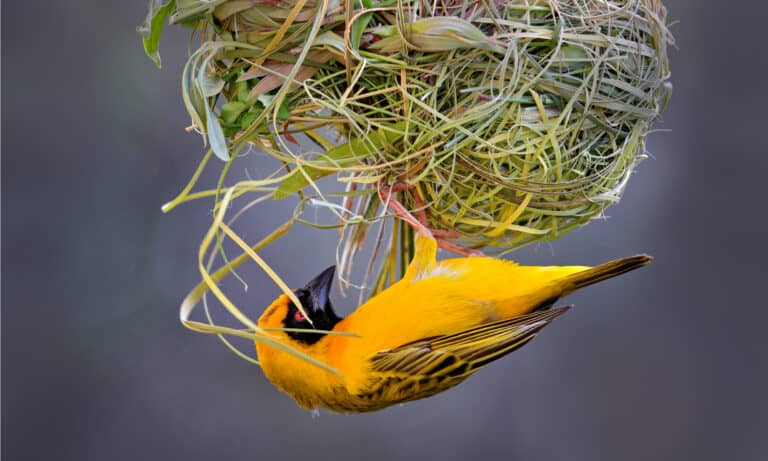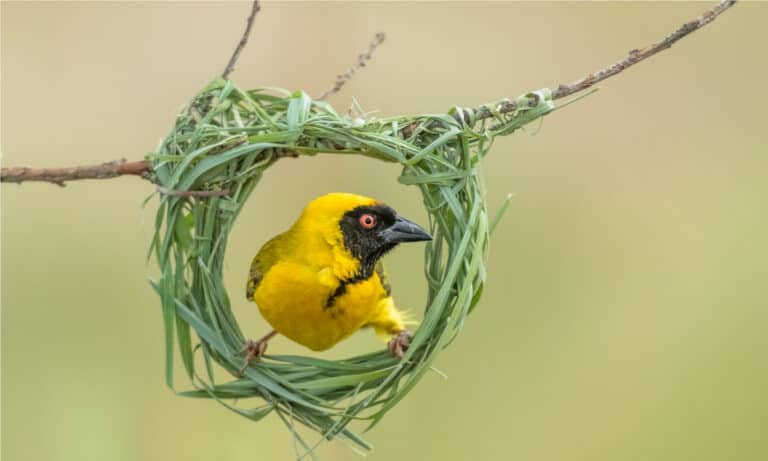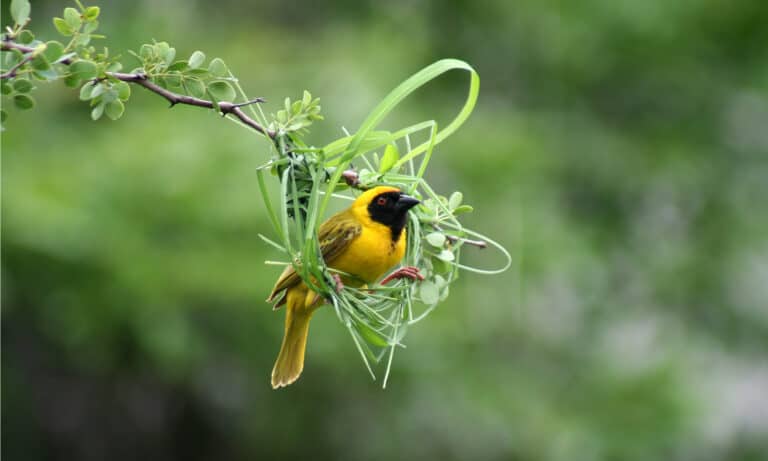In the world of avian wonders, few creatures display the artistry and engineering skills of the weaver bird. With meticulous precision and unwavering determination, these feathered architects construct elaborate nests that stand as a testament to their ingenuity and devotion. The weaver’s nest-building prowess reaches its zenith during the breeding season, where every strand and stitch serves a purpose in creating a safe haven for their future offspring.

As the breeding season approaches, male weaver birds embark on a remarkable journey, scouring their surroundings for the perfect location to build their nests. It is a meticulous process that requires an acute sense of aesthetics and structural knowledge. These tiny engineers seek out tall grasses, reeds, or branches hanging over water bodies, where they can construct their nests with the utmost precision.

The weaver’s nest begins with a strong framework formed by intertwining long, flexible grass stems or twigs. This foundation serves as the backbone of the structure, providing stability and strength. The male weaver meticulously weaves the stems, forming a tightly knit structure that can withstand the elements and the test of time. With each strand meticulously chosen and strategically placed, the nest starts to take shape, resembling an upside-down flask with a small entrance hole at the bottom.

But the weaver’s artistry doesn’t end with the framework. To ensure the nest remains secure and well-insulated, the weaver employs a variety of materials. Soft plant fibers, feathers, and even spider silk are meticulously incorporated into the nest’s walls, providing a cozy and safe environment for the upcoming brood. The male weaver demonstrates remarkable skill in selecting the right materials and arranging them in intricate patterns, ensuring the nest is both comfortable and visually appealing.
The male weaver’s efforts don’t go unnoticed, as they seek to attract a mate through their architectural prowess. Female weavers, known for their discerning eye, carefully inspect potential mates’ nests before making a selection. They examine the construction quality, the choice of materials, and the overall aesthetic appeal. A well-built nest signifies the male’s strength, resourcefulness, and ability to provide a secure home for their future family.

Once a mate is chosen, the weaver’s nest becomes a stage for courtship rituals and the breeding process. The female inspects the nest’s interior, testing its comfort and durability. If satisfied, she proceeds to line the nest’s inner chamber with soft feathers and grass to create a cozy cradle for the eggs. Together, the pair meticulously prepare the nest, reinforcing any weak spots and adding finishing touches to ensure it is ready for the arrival of their offspring.
Throughout the breeding season, the weaver birds’ elaborate nests become a thriving hub of life. Chirps and songs echo from within as the parents take turns incubating the eggs and foraging for food. The tightly woven structure protects the fragile eggs from predators and harsh weather conditions, while also providing a warm, secure shelter for the hatchlings.
As the young weavers grow, their nest gradually expands to accommodate their increasing size. The intricate design and sturdy construction allow the nest to withstand the growth of the brood, providing ample space and protection until the fledglings are ready to venture out into the world.
The weaver’s nest-building prowess is a testament to the marvels of nature. It showcases the intricate abilities and architectural skills possessed by these remarkable birds. Their elaborate nests stand as a testament to the power of determination, creativity, and unwavering dedication to nurturing the next generation. The weaver’s nest-building process is a symphony of artistry, engineering, and love—a true masterpiece in the avian world.








